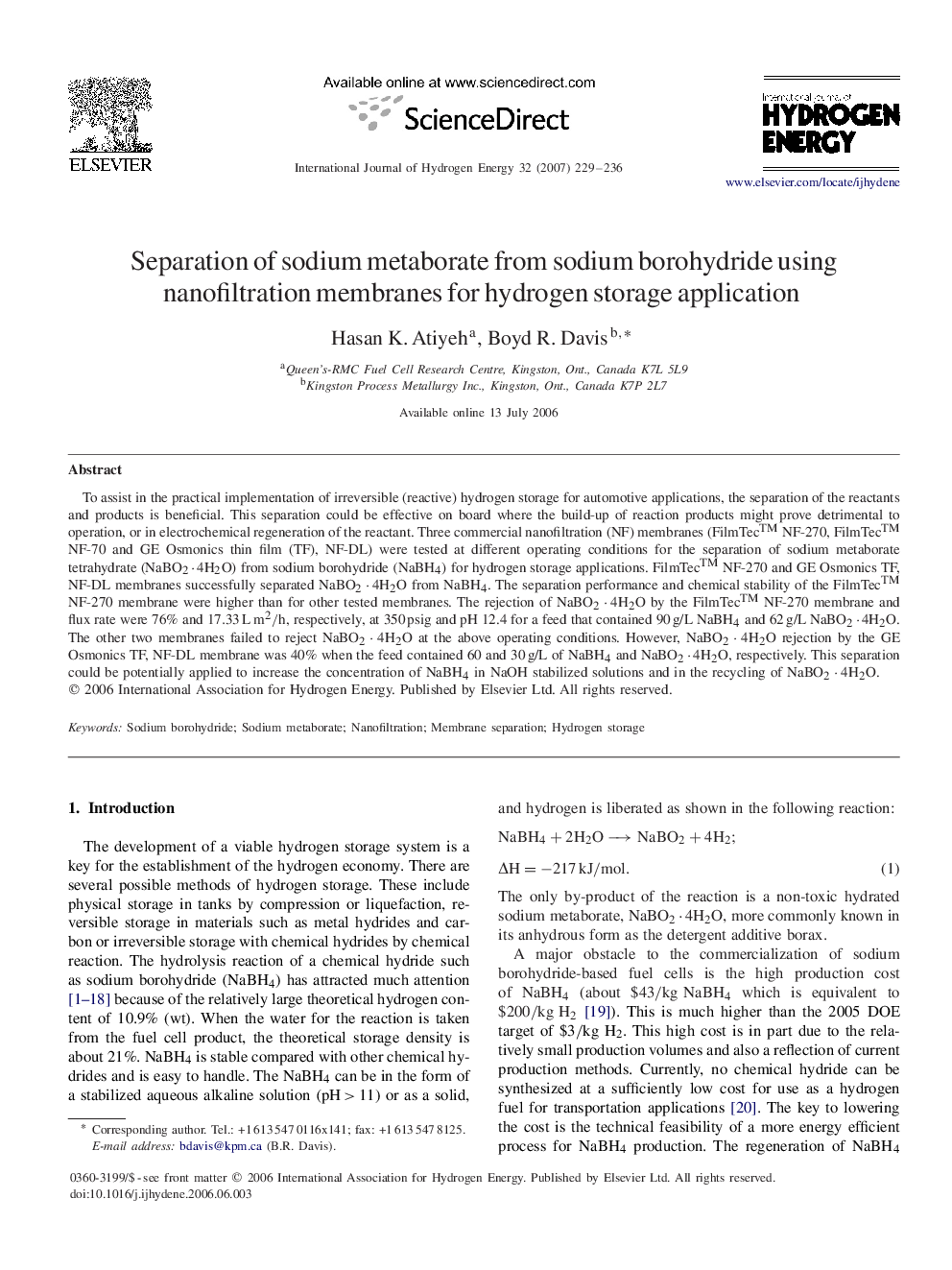| Article ID | Journal | Published Year | Pages | File Type |
|---|---|---|---|---|
| 1280229 | International Journal of Hydrogen Energy | 2007 | 8 Pages |
To assist in the practical implementation of irreversible (reactive) hydrogen storage for automotive applications, the separation of the reactants and products is beneficial. This separation could be effective on board where the build-up of reaction products might prove detrimental to operation, or in electrochemical regeneration of the reactant. Three commercial nanofiltration (NF) membranes (FilmTecTM NF-270, FilmTecTM NF-70 and GE Osmonics thin film (TF), NF-DL) were tested at different operating conditions for the separation of sodium metaborate tetrahydrate (NaBO2·4H2ONaBO2·4H2O) from sodium borohydride (NaBH4)(NaBH4) for hydrogen storage applications. FilmTecTM NF-270 and GE Osmonics TF, NF-DL membranes successfully separated NaBO2·4H2ONaBO2·4H2O from NaBH4NaBH4. The separation performance and chemical stability of the FilmTecTM NF-270 membrane were higher than for other tested membranes. The rejection of NaBO2·4H2ONaBO2·4H2O by the FilmTecTM NF-270 membrane and flux rate were 76% and 17.33Lm2/h, respectively, at 350 psig and pH 12.4 for a feed that contained 90 g/L NaBH4NaBH4 and 62 g/L NaBO2·4H2ONaBO2·4H2O. The other two membranes failed to reject NaBO2·4H2ONaBO2·4H2O at the above operating conditions. However, NaBO2·4H2ONaBO2·4H2O rejection by the GE Osmonics TF, NF-DL membrane was 40% when the feed contained 60 and 30 g/L of NaBH4NaBH4 and NaBO2·4H2ONaBO2·4H2O, respectively. This separation could be potentially applied to increase the concentration of NaBH4NaBH4 in NaOH stabilized solutions and in the recycling of NaBO2·4H2ONaBO2·4H2O.
